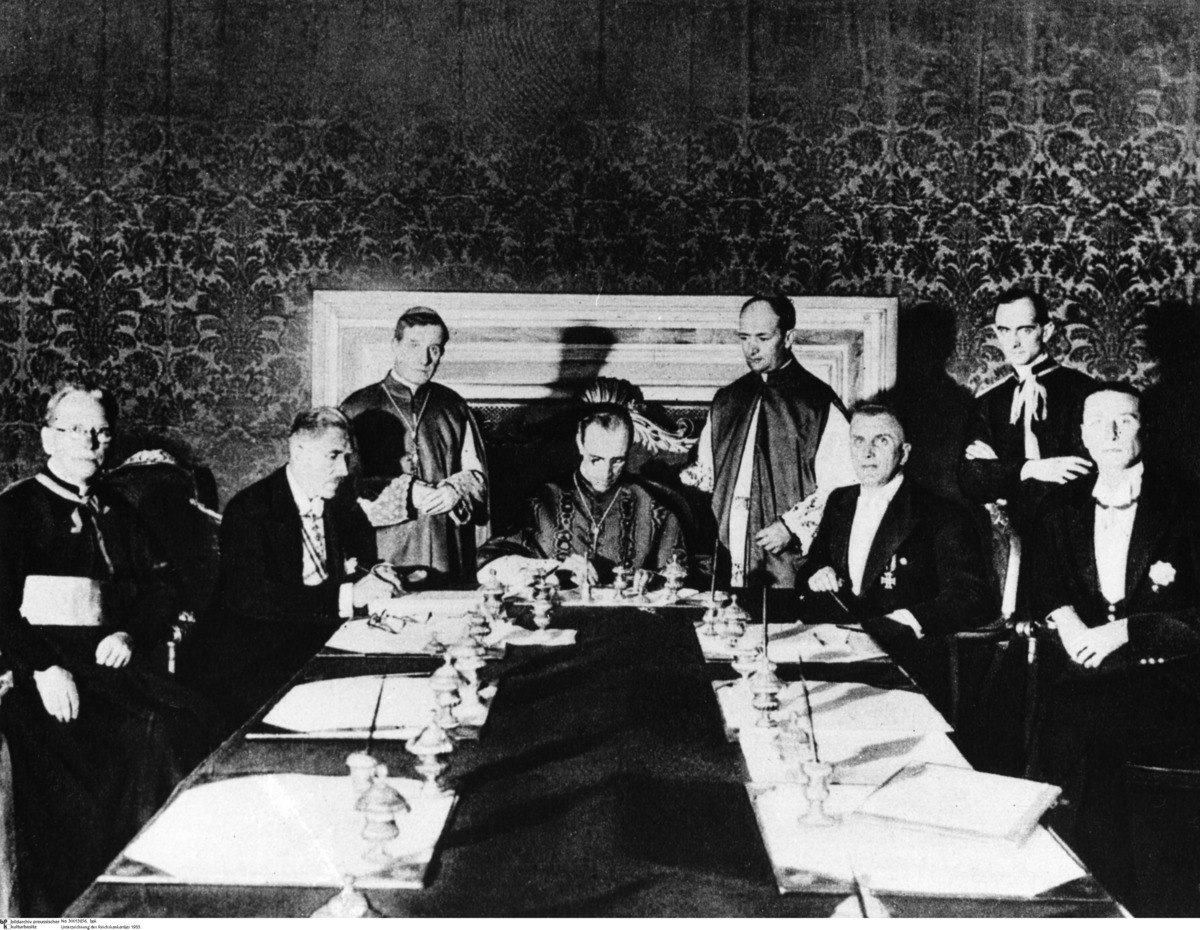Abstract
The Reich Concordat of July 20, 1933, was supposed to regulate the
relationship between the German Reich and the Catholic Church. The
Vatican agreed to withdraw representatives of Catholic interests from
the political realm. In return, the Nazi leadership promised to preserve
the religious freedom and institutional integrity of the churches in
Germany. Hitler did not intend to keep this promise. For him, the Reich
Concordat was a way to temporarily mollify the churches and to gain
international prestige. The photo shows (from left to right) prelate
Ludwig Kaas, German Vice Chancellor Franz von Papen, Papal
Undersecretary of State Guiseppe Pizzardo, Papal Secretary of State
Eugenio Pacelli (later Pope Pius XII), Papal Deputy Ottaviani,
Ministerial Director Rudolf Buttman, Papal Deputy Montini (Paul VI) and
Councilor Klee at the signing of the Concordat.
